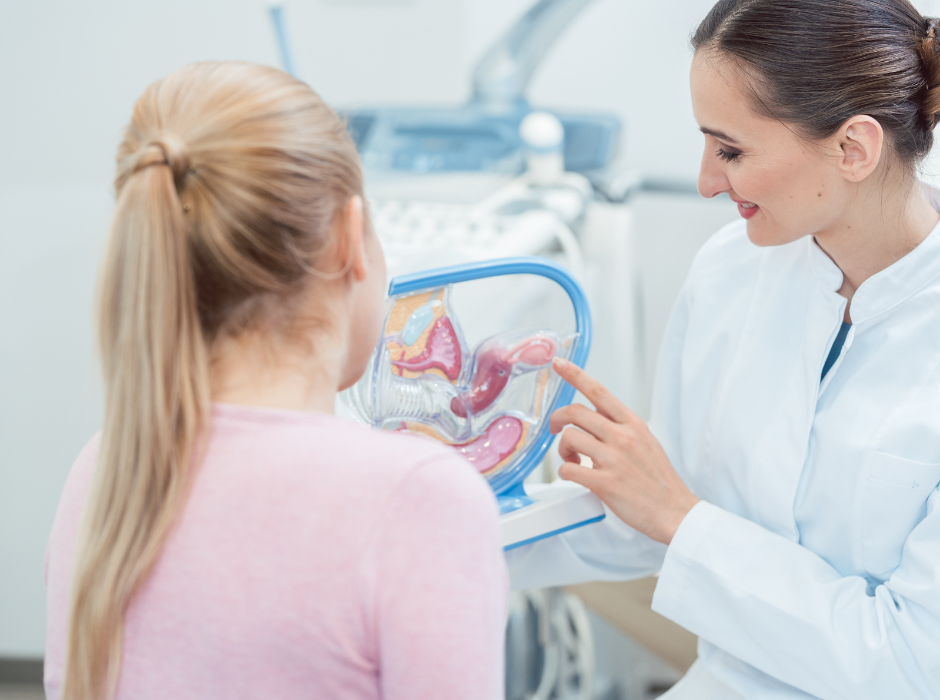5 Things You Need to Know About Fertility Preservation

Over the past 50 years, the age at which women have begun having children has steadily increased. While it was once customary to marry and have children around 20-25 years of age, it’s now common for women to begin growing their families in their 30s and even 40s. This is due to a number of personal, medical, and personal reasons, and postponing family building provides women with opportunities for higher education, career advancements, travel, financial security, partnerships, and more.
But there is one downside to delayed family building: the effect of age on egg (oocyte) number and quality (also called ovarian reserve). We are born with 1-2 million eggs in our ovaries, which is all of the eggs that we will have in our lifetimes. Unfortunately, this number naturally declines over time. By the time we reach 30 years of age, we may have anywhere from 150,000-300,000 eggs remaining in our ovaries, though genetics and other medical conditions can affect these numbers.
Not only does the number of our eggs decline over time, but their quality declines, as well. This means that the DNA (genetic material) inside more and more of our eggs becomes damaged, which can cause chromosomal abnormalities within our eggs. If these eggs are fertilized by a sperm, their chromosomal abnormalities can be passed on to the embryo. Embryos with chromosomal abnormalities are at an increased risk of not implanting in the uterus, miscarrying, or having genetic conditions such as Down Syndrome.
Egg quality begins to slowly decline around 32 years of age, but it becomes more rapid around 36 years of age. This rapid decline continues until menopause, at which point no eggs remain inside our ovaries. Because women over 35 have a higher percentage of eggs with chromosomal abnormalities remaining in their ovaries, it is sometimes more difficult for them to get pregnant or carry a pregnancy to term using their own eggs, though fertility challenges can affect women at any age.
The good news is that there is a way to delay family building until you are ready without worrying about the age-related decline in your egg number and quality. Fertility preservation procedures allow you to freeze (cryopreserve) your eggs (or embryos, if you choose to inseminate them) at a younger age, when you are more likely to have a higher number of good quality eggs, for use when you are ready to begin building your family. Utilizing these “younger” eggs provides you with a higher chance of creating embryos without genetic abnormalities, which can optimize your chances of success.
I should probably clarify that the “age” of an egg is not always the same as a woman’s actual age. An egg’s “age” refers to how old the woman is when that egg is either frozen or inseminated. So, if you are 30 and freeze your eggs, your eggs will remain “30” years old even if you do not utilize them until you are older. This is because eggs (and embryos) do not develop while they are frozen. In a sense, they are frozen in time.
If you are interested in preserving your fertility, here are 5 things that you should know before you begin your journey:
- Whether you are freezing your eggs or embryos, in vitro fertilization (IVF) will be required at some point.
Both egg and embryo freezing occur with in a fertility lab and require the following procedures to be performed:
Egg freezing:
- Ovarian stimulation: near the start of your menstrual cycle, prescribed medications are administered for 8-12 days that cause multiple eggs to develop in the ovaries.
- Egg retrieval: the developed eggs are retrieved from their follicles in the ovaries.
- Egg grading: the retrieved eggs are sorted based on their stages of development.
- Egg freezing: the developed eggs are frozen through a process known as vitrification and are stored in liquid nitrogen.
- Egg thawing: when you are ready to utilize your frozen eggs, they are removed from liquid nitrogen and warmed (thawed).
- IVF: the thawed eggs are inseminated in the lab, and the resulting embryos are given a few days to develop in an incubator. Embryos that develop properly can be transferred to the uterus or frozen (with or without preimplantation genetic testing, or PGT) in liquid nitrogen.
Embryo freezing (see above for descriptions of each procedure):
- Ovarian stimulation
- Egg retrieval
- Egg grading
- IVF
- You will still have eggs left in your ovaries if you freeze your eggs or embryos.
As I mentioned before, we can have up to 150,000 eggs in our ovaries in our early 30s. If you elect to freeze your eggs or embryos, only a small number of eggs (roughly 10-25) are retrieved from your ovaries. So, even if you do multiple egg retrievals, you will still have many eggs remaining in your ovaries and can still get pregnant on your own, if desired.
- It takes time to freeze your eggs or embryos, so it’s best to start sooner rather than later.
A lot of women think that they can walk into a clinic and have their eggs frozen that same day. Unfortunately, that is not the case. Before you can freeze your eggs or embryos, you will need to establish care at a fertility clinic. Keep in mind that some clinics may have waitlists, which can delay the process. You may also need to complete preliminary testing, such as blood work and an ultrasound, prior to the start of your treatment. In some cases, additional testing or procedures may also need to be completed, and some cycles may need to be canceled for various reasons.
Depending on the number of developed eggs that you have retrieved, you may need or desire to complete an additional egg retrieval (or more). Unfortunately, all of the eggs that are retrieved are often not able to be frozen or inseminated because they are not at the proper stage of development. Additionally, some eggs may not survive the freezing and thawing processes, or the eggs that are inseminated may not fertilize properly or result in healthy embryos (and even healthy embryos do not always implant or result in healthy live births).
For these reasons, it helps to have multiple eggs (20+) or embryos (3+) frozen to increase the chances of one embryo resulting in a healthy live birth, though some people require more or less. I recommend talking with your doctor at your first appointment about how many eggs or embryos you should have frozen based on your age, diagnosis, and family-building goals.
- Eggs and embryos can be frozen indefinitely.
It was once believed that eggs and embryos could only remain frozen for a few years before they incurred damage from the liquid nitrogen in which they are submerged. However, this has disproven in recent years. In fact, eggs and embryos that have been frozen for over 10 years have been successfully thawed and have resulted in healthy live births.
Why was it once believed that there was a limited amount of time that eggs and embryos are frozen? It’s because the techniques for freezing eggs and embryos have changed over the past few decades. Eggs and embryos that were frozen using older techniques are more prone to damage during the freezing and thawing processes than embryos that were frozen using newer techniques. So, it’s not the liquid nitrogen that damages the eggs and embryos, but rather the way that they were frozen and thawed prior to new techniques.
- There are often costs associated with egg and embryo freezing, but options are available.
In countries such as the USA where fertility treatment is not covered, egg and embryo freezing procedures can be expensive and often include the costs of the medications, procedures, and storage fees. I recommend requesting a price estimate and breakdown from your fertility clinic before you begin treatment to understand the costs for which you will be responsible.
The good news is that there are some options available to help with the costs of treatment. For example:
- Some clinics offer financial grants and packages, financing options, and other programs to help alleviate some or all of the costs associated with egg or embryo freezing.
- Some insurance companies cover some or all of the treatment costs, while others do not. I recommend speaking with your insurance company to understand exactly what is covered under your policy. Additionally, if your medical insurance is through your employer, you can ask your human resources department to add fertility coverage to your company’s policy.
- Many of the costs associated with egg and embryo freezing are FSA and HSA eligible.
Conclusion:
Fertility preservation procedures are giving women the power to build their families when they are ready to do so. You now know why it is important to preserve your fertility at a younger age, so don’t wait on the decision to freeze your eggs or embryos. Do your research, find a clinic, and look into your financial options and coverage. Your future self will thank you for investing in your fertility!
About the Author
Jessica Manns, MS, has been helping people build their families as an embryologist since 2018. She is also the creator of ExplainingIVF on Instagram, where she provides free, evidence-based information about IVF and infertility to her followers. She is currently publishing an all-in-one guide to IVF and infertility and is a gestational surrogate. Jessica resides in Pittsburgh, PA, with her husband, daughter, and dogs.






